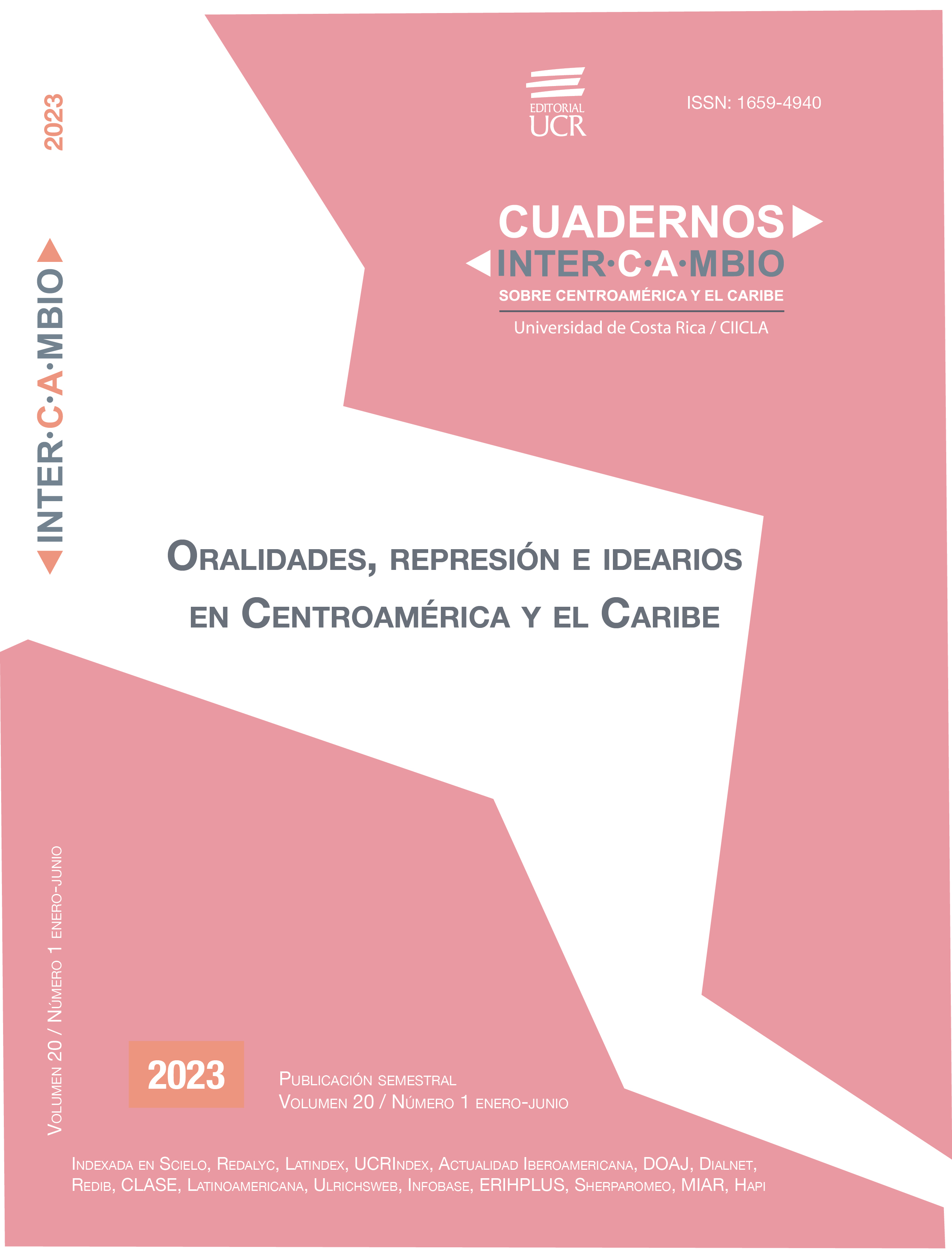Abstract
The Nicaraguan festivity dedicated to the Immaculate Conception of the Virgin Mary is a very vast topic. In this study, our purpose is an approach to the Gritería, an activity celebrated the day before. It is intended to show that the heritage value of a cultural asset is a process that is built with the creation, appropriation, resemantization and innovative adaptation to the circumstances of the environment shared by a group, which considers it as an identity reference. This is the case of the Gritería, an example of the living culture of the Nicaraguan people, of national coverage and that has migrated beyond those borders. Ethnographic work and the use of qualitative social research techniques were applied in different communities in Nicaragua; as a complement, some references are presented to the celebration in countries where Nicaraguans have emigrated. The participatory management in the organization of this important celebration is pointed out, which, wherever it is celebrated, maintains the function of cohesion of the Nicaraguan people and the meeting of its traditions. The result of the study shows that despite the differences, the Gritería is an element of patrimonial value, of meaning for different sectors of the Nicaraguan people, whether or not they believe, the Catholic Church and the Government.
References
Bajtin, Mijáil. (1990). La cultura popular en la edad Media y en el Renacimiento. El contexto de François Rabelais. Alianza Editorial.
Bonfil Batalla, Guillermo. (1997). Nuestro patrimonio cultural: un laberinto de significados. El patrimonio nacional de México. FCE, CONACULTA.
Bourdieu, Pierre. (2010). El sentido social del gusto. Siglo XXI Editores.
Dobles Oropeza, Ignacio; Vargas Selva Gabriela y Amador Rojas, Krissia. (2014). Inmigrantes. Psicología,identidades y políticas públicas. La experiencia colombiana y nicargüense en Costa Rica. Editorial UCR.
Ekern, Stener. (1995). La Purísima, ¿reflejo de la idiosincracia del pueblo nicaragüense?, Mesoamérica, 16(30), 315-370.
González López, Katherine Elieth; Mora Alemán, Adonis y Pilarte Barahona, Cristhel Sofana. (2020). Cambios que se perciben en la celebración de la Purísima. Concepción de María, atractivo turístico del Municipio de Masaya (2016-2019). [Monografía para optar al título de Licenciatura en Turismo Sostenible]. Universidad Nacional Autónoma de Nicaragua. UNAN.
Guber, Rosana. (2012). La etnografía: método, campo y reflexividad. Siglo Veintiuno Editores.
Hall, Stuart. (2003). Introducción. ¿quién necesita identidad? En Stuart Hall y Paul du Gay (Coords.), Cuestiones de identidad cultural (pp. 13-39). Amorrortu.
Ibarra Arana, José Ernesto. (2015). Evangelizar a los migrantes desde su identidad cultural. El caso de la celebración de la Purísima con los migrantes nicaragüenses en La Carpio (San José, Costa Rica). Anales de Teología, 17(1), 113-152.
La Voz de Nicaragua. (2011). Historia de la Purísima Inmaculada Concepción de María. http://lavozdenicaragua.blogspot.com/2011/12/historia-de-la-purisima-inmaculada.html
Neira, Germán. (1993). Una dimensión de encarnación: la evangelización inculturada. En Theologica Xaveriana, 105, 67-85.
Neu, Denese. (2015). The Story of La Purisima and La Griteria: A Unique Nicaraguan Sacred Tradition Adapted to Louisiana. www.louisianafolklife.org/lt/articles_essays/nicaraguans.html
Noticias León. (2012). Iglesia no apoya solicitud. https://noticiasleon.blogia.com/2012/102215-iglesia-no-apoya-solicitud
Oliva Regidor, Harlan. (2013). La Purísima, en la Identidad del Nicaragüense. Temas Nicaragüenses, 68, 58-62.
Programa Estado de la Nación. (2016). Quinto Informe Estado de la Región en Desarrollo Humano Sostenible. Programa Estado de la Nación.
Ramos, Elsa. (2008). Migración sur-sur: el caso de los nicaragüenses en El Salvador. Universidad Tecnológica del El Salvador.
Revista Envío. (s. f.). La fiesta de la Purísima: una tradición muy nicaragüense. http://www.envio.org.ni/articulo/29
Sánchez Rizo, Erving. (2012). Feligreses respaldan solicitud ante UNESCO de declarar a la Gritería como Patrimonio de la Humanidad. El 19 digital. https://www.el19digital.com/articulos/ver/titulo:4805-feligreses-respaldan
Sandoval García, Carlos. (2002). Otros amenazantes: los nicaragüenses y la formación de identidades nacionales en Costa Rica. Editorial UCR.
Sandoval García, Carlos; Brenes Montoya, Mónica; Paniagua Arguedas, Laura; Masis Fernández, Karen. (2010). Un país fragmentado. La Carpio: comunidad, cultura y política. Editorial Universidad de Costa Rica.
Shiffman, Geovanny. (2020, 28 de octubre). Recomendaciones para celebrar La Gritería con seguridad en tiempos de Covid-19. https://www.laprensa.com.ni/2020/10/28/nacionales/2738703-recomendaciones-para-celebrar-la-griteria-con-seguridad-en-tiempos-de-covid-19
Trinchera de la Noticia. (2012, 24 de octubre).
UNESCO. (2003). Convención para la salvaguarda del patrimonio cultural inmaterial. http://unesdoc.unesco.org/images/0013/001325/132540s.pdf
Zapparolli Zecca, Mayra. (2014). Religiosidad popular: representaciones sociales en torno a las vírgenes patronas de Costa Rica y Nicaragua en procesos migratorios (2010-2012). [Tesis para optar el grado de Doctora en Arte y Cultura de Centro América]. Universidad Nacional, Heredia.
Comments

This work is licensed under a Creative Commons Attribution-NonCommercial-NoDerivatives 3.0 Unported License.
Copyright (c) 2023 The author


